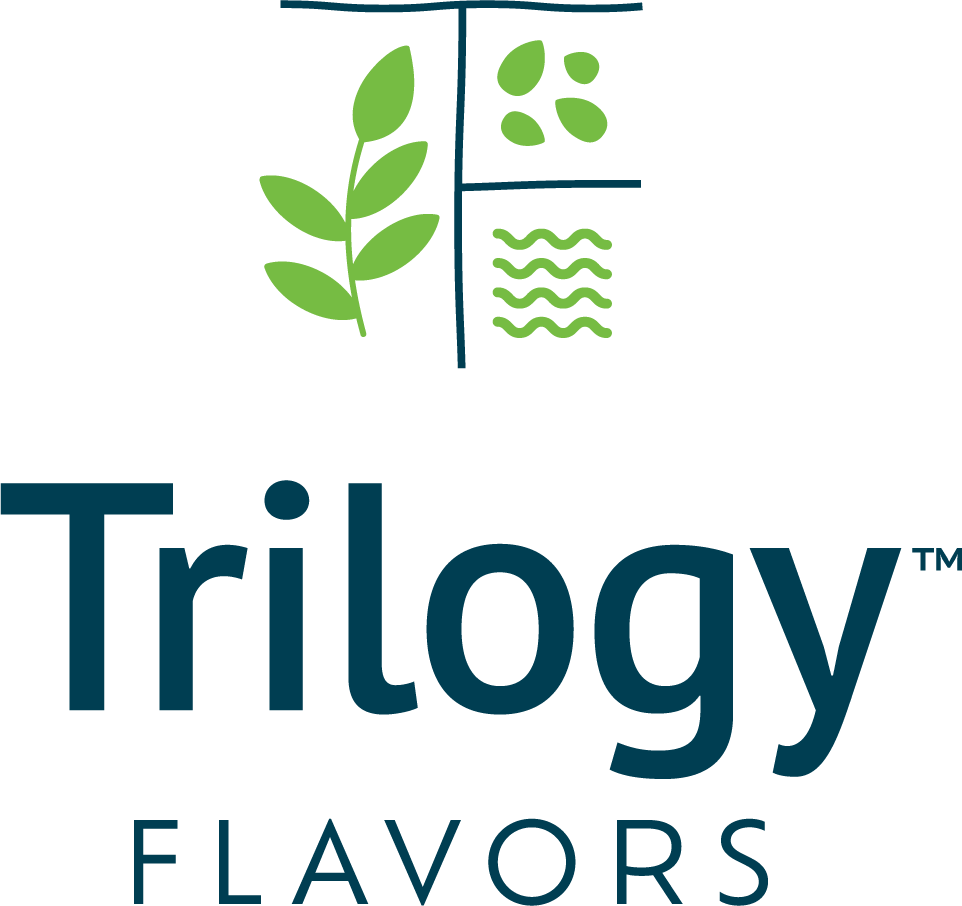In the world of food and beverage manufacturing, achieving the perfect balance of flavors is more than just a creative process—it’s a science. Enter flavor synergy: the art of combining ingredients in ways that enhance each other’s natural taste, creating a richer, more complex flavor profile.
For food manufacturers, this concept is vital to crafting products that not only stand out on the shelves but also captivate the taste buds of consumers.
At the heart of this innovation are flavor companies for food manufacturers, like Trilogy Flavors, whose expert scientists specialize in creating natural flavor formulations and enhancers that elevate products. By harnessing the power of flavor synergy, these companies help manufacturers develop exceptional taste experiences that are both unique and consistent.
In this article, we’ll look at how flavor synergy works, the types of ingredients that can be combined to enhance taste, and how this technique is revolutionizing the food and beverage industry. Get ready to discover how the right combination of flavors can transform your products from good to extraordinary.
Understanding Flavor Synergy
Flavor synergy is more than just a trendy term—it’s the secret behind creating harmonious, multi-dimensional tastes in food and beverages. At its core, flavor synergy refers to the interaction between two or more ingredients that results in a taste experience greater than the sum of their parts.
It’s the reason why certain flavor combinations are so irresistible—like the sweet and salty balance in caramel and sea salt, or the rich umami depth found in a well-seasoned broth.
Unlike simple flavor pairing, which focuses on matching ingredients with similar profiles, flavor synergy is about leveraging the unique properties of each ingredient to enhance and elevate the overall taste. When done right, these combinations can create new taste experiences, amplifying the flavors in ways that would be impossible by using just one ingredient on its own.
For instance, the combination of acid and fat can create a more balanced and enjoyable taste by cutting through richness while bringing out the depth in both components. Similarly, spices like cinnamon or clove can add warmth to a dish, while a splash of citrus brightens it, making both flavors more pronounced.
In the world of food manufacturing, flavor companies for food manufacturers, like Trilogy Flavors, understand these scientific principles. Their expert teams know how to craft natural flavor formulations that not only taste great on their own, but interact with other ingredients to create something truly special.
By mastering the art of flavor synergy, these companies help manufacturers unlock new, exciting possibilities for product development.
The Role of Ingredients in Flavor Synergy
Creating perfect flavor synergy requires more than just a collection of ingredients; it’s about understanding how each element interacts with others. Different ingredients have unique properties that can either enhance or balance the overall taste profile of a product.
By thoughtfully combining the right ingredients, manufacturers can craft flavors that are more complex, balanced, and engaging.
1. Sweeteners and Acids: The Balancing Act
One of the most fundamental examples of flavor synergy occurs between sweeteners and acids. The sweetness of sugar or honey, when combined with the sharpness of citric acid or vinegar, creates a balance that enhances the overall flavor experience.
The acid cuts through the richness of sweetness, while the sweetness softens the bite of the acid, creating a harmonious blend that’s both refreshing and satisfying.
In beverage products like fruit juices or flavored waters, this balance is essential. Without the right combination of sweetness and acidity, a drink might taste flat or overly tart. That’s where flavor companies for food manufacturers, like Trilogy Flavors, come into play, providing expertly crafted natural flavor enhancers that achieve the perfect balance.
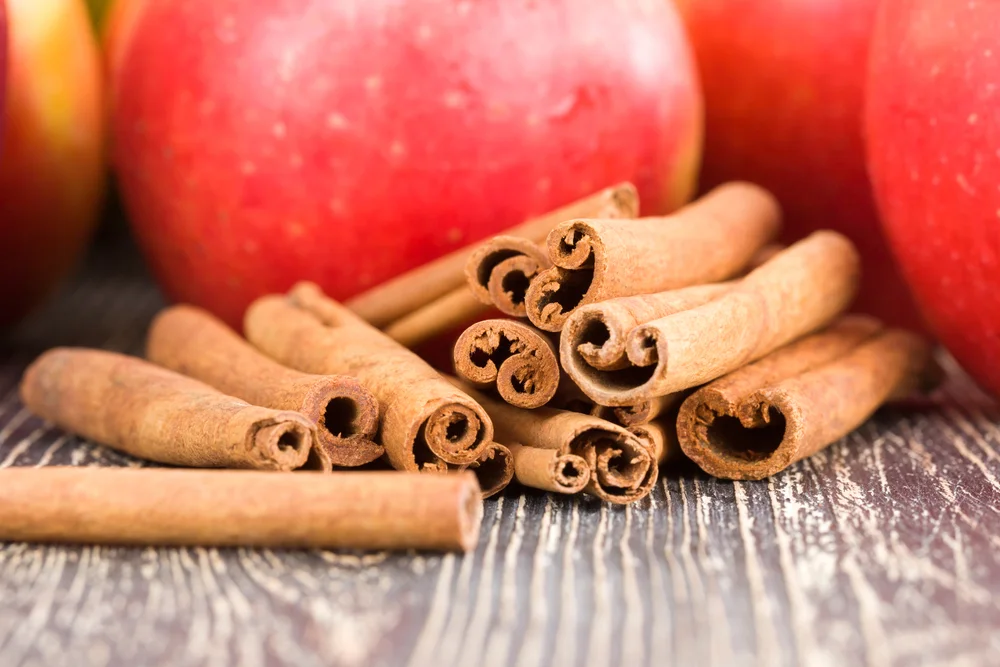
2. Herbs and Spices: Adding Depth and Complexity
Herbs and spices bring more than just aroma to the table—they also add layers of complexity and depth to a flavor profile. Ingredients like basil, oregano, cinnamon, and cumin have compounds that interact with other flavors in unique ways, enhancing certain notes or providing contrast to others.
For example, adding a pinch of cinnamon to a chocolate dessert brings out a warm, earthy depth that enhances the richness of the chocolate without overwhelming it.
In savory applications, spices can introduce a subtle heat or earthiness that complements and elevates the other ingredients. When combined correctly, these ingredients work together to create a depth of flavor that surprises and delights the palate.
3. Umami and Savory Notes: Enhancing Richness
Umami—the savory, rich taste often associated with ingredients like mushrooms, soy sauce, and aged cheeses—plays a critical role in flavor synergy. This savory taste has the power to enhance the perceived richness of a dish, making it more satisfying.
When paired with sweet or acidic elements, umami can act as a counterbalance, making the overall flavor profile more rounded and full-bodied.
For instance, in a sauce or marinade, the inclusion of an umami-rich ingredient like miso can elevate the entire flavor profile, making the other ingredients taste more pronounced and nuanced.
4. Salt: The Flavor Amplifier
Salt is a key ingredient in flavor synergy, not just for its taste but for its ability to amplify other flavors. It can bring out sweetness, balance bitterness, and enhance savory notes in a way that makes the entire product more vibrant. In combination with other seasonings, salt can serve as the ultimate enhancer, allowing each ingredient to shine.
5. Texture and Mouthfeel: Beyond Taste
While not technically a flavor, texture and mouthfeel play an important role in flavor synergy. A smooth, velvety mouthfeel can elevate the experience of rich, creamy ingredients like chocolate or cheese, while a crisp, refreshing texture can enhance the impact of citrus or fresh herbs.
In beverage products, for example, the right balance of sweetness, acidity, and texture is essential for creating a product that feels as good as it tastes.
In all of these examples, the interactions between ingredients are key to creating the perfect flavor synergy. This is where the expertise of flavor companies for food manufacturers is invaluable. With their deep understanding of ingredient interactions, they can help manufacturers craft the ideal blend of flavors to create truly remarkable products.
Applications of Flavor Synergy in the Food and Beverage Industry
Flavor synergy isn’t just a theoretical concept—it’s a practical tool that food and beverage manufacturers use to create products that resonate with consumers.
Whether it’s a new line of beverages, a gourmet snack, or a unique sauce, understanding and applying flavor synergy is key to developing products that stand out in a crowded market. Let’s explore some of the ways flavor synergy is applied in the industry.

1. Beverages: Creating Balanced Flavors
Beverage manufacturers rely heavily on flavor synergy to craft drinks that are both refreshing and complex. The combination of sweeteners, acids, herbs, spices, and even natural flavor enhancers can elevate a simple drink to a sophisticated product.
For example, a sparkling water flavored with citrus and mint benefits from the synergy of the tartness of lime, the fresh brightness of mint, and the effervescence of bubbles.
In more complex beverages like fruit juices, energy drinks, or functional waters, the careful balance of sweetness, acidity, and herbal notes is crucial. A flavor company for food manufacturers like Trilogy Flavors can help refine these flavor combinations, ensuring that each ingredient complements the others for a smooth, enjoyable drinking experience.
2. Sauces and Condiments: Boosting Flavor Profiles
From ketchup and mustard to gourmet salad dressings and marinades, sauces and condiments are the perfect playground for flavor synergy. The combination of salty, sweet, acidic, and savory ingredients is what makes these products so appealing.
For instance, a classic BBQ sauce relies on the synergy between tangy vinegar, sweet molasses, smoky paprika, and spicy chili peppers to create a robust flavor profile that enhances grilled meats and vegetables.
By understanding how to balance these different flavor notes, manufacturers can create sauces that taste great and pair perfectly with specific dishes or cooking methods. Flavor companies specializing in natural formulations can provide the insight and expertise needed to develop innovative new sauces that meet consumer preferences.

3. Snack Foods: Enhancing the Eating Experience
Snack foods—whether savory, sweet, or a combination of both—are another area where flavor synergy plays a vital role. Think about the classic combination of cheese and crackers or the dynamic contrast of sweet and salty in chocolate-covered pretzels.
These flavor combinations work because they exploit flavor synergy to create an experience that feels satisfying and complete.
By combining ingredients like spices, fats, sugars, and acids, manufacturers can create snack products that appeal to a wide range of tastes and preferences. The careful balance of these elements ensures that each bite is as flavorful as the last, which is key to a product’s success in a competitive snack market.
4. Desserts: Elevating Sweet Treats
Desserts, too, benefit greatly from flavor synergy. The balance between sweetness, acidity, bitterness, and fat is what makes desserts such a sensory pleasure. For example, the richness of dark chocolate is complemented by the brightness of raspberry or orange zest, creating a harmonious and indulgent experience.
Similarly, the tang of cream cheese frosting enhances the sweetness of carrot cake, bringing out the best in both flavors.
In the dessert industry, the ability to combine complementary flavors is crucial to developing new, exciting offerings. Manufacturers who understand the principles of flavor synergy are able to create dessert products that feel fresh and innovative, even while staying true to familiar flavor profiles.
5. Health and Wellness Products: Natural Flavor Enhancements
As consumers become more health-conscious, the demand for products with cleaner, more natural ingredients has grown. This is where flavor synergy is especially valuable in functional foods and beverages, such as those designed to support hydration, immunity, or digestion.
By using natural flavor enhancers, such as herbal extracts or plant-based flavor profiles, manufacturers can create products that are both effective and enjoyable to consume.
For example, in electrolyte drinks, combining natural flavors like lemon, mint, and ginger can create a refreshing, rejuvenating taste experience that encourages consumers to hydrate more frequently.
This type of synergy between functional ingredients and flavors is essential for crafting wellness products that appeal to modern consumers.
6. Product Innovation: Creating New Flavor Experiences
Finally, flavor synergy is essential for driving innovation in the food and beverage sector. By combining unexpected or lesser-known ingredients in innovative ways, manufacturers can create entirely new taste experiences.
For example, the combination of spicy and sweet, or savory and umami, can give rise to new product categories that captivate adventurous eaters.
A flavor company for food manufacturers like Trilogy Flavors can guide manufacturers through this creative process, helping to develop novel flavor combinations that not only meet consumer expectations but also push the boundaries of taste.

The Science Behind Flavor Enhancement
Understanding the science behind flavor synergy is crucial for creating consistently exceptional products. While combining ingredients for enhanced taste may seem like a creative endeavor, it’s also rooted in the chemical interactions that occur when flavors mix.
The art of flavor enhancement lies in recognizing how these interactions impact the way we perceive taste, and how they can be leveraged to craft truly unforgettable flavor experiences.
1. Chemical Interactions: The Key to Flavor Synergy
At its core, flavor synergy is driven by chemical interactions between the compounds in different ingredients. These interactions can either amplify or mute specific flavor notes, creating a harmonious balance or a more intense flavor experience.
For instance, when citrus juice is added to a fatty dish like avocado or creamy dressings, the acid in the citrus helps to cut through the richness, while also enhancing the freshness of the other ingredients.
This process relies on the interaction of volatile compounds—those that are easily released into the air and detectable by our sense of smell—and non-volatile compounds, which are responsible for taste perception on our tongue.
Flavor companies for food manufacturers, like Trilogy Flavors, are experts in understanding these molecular processes, helping to create formulations that produce the ideal flavor balance.
2. The Role of Aromas in Flavor Perception
Our sense of smell is closely linked to our perception of taste, and aromas play a significant role in flavor synergy. Studies have shown that more than 80% of what we perceive as “taste” is actually a result of smell. The release of aromatic compounds when food is chewed or ingested directly impacts how we experience flavor.
For example, a food product that combines sweet and savory flavors may trigger multiple aroma receptors, allowing us to perceive the sweetness as more intense and the savory notes as more complex.
Understanding these connections allows flavor companies to craft flavors that not only taste great but also activate the right aromatic pathways to enhance the overall eating or drinking experience.
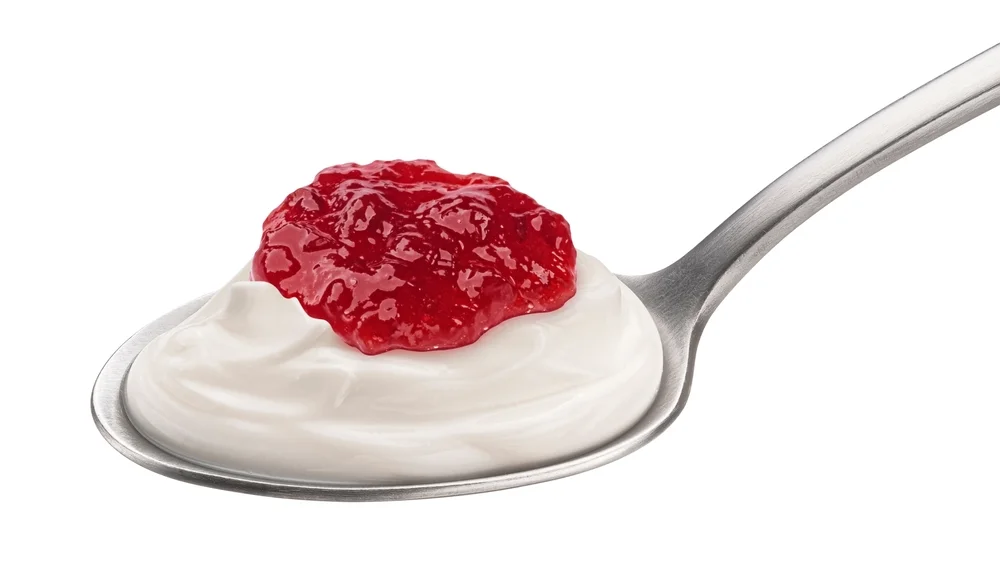
3. The Impact of Texture on Flavor Perception
Texture plays a critical role in how flavors are perceived. Our brain associates certain textures with specific flavor profiles. A smooth, creamy texture often amplifies the richness of flavors, while a crunchy texture can enhance the perception of freshness and intensity.
This is why a thick, creamy yogurt may feel richer and more indulgent compared to a thinner, more watery version, even if both have the same flavor base.
Flavor companies for food manufacturers know how to pair ingredients that provide the right texture to match the desired flavor outcome. For example, combining the right starches with fruits in smoothies can not only improve mouthfeel but also enhance the perception of sweetness and richness.
4. Sensory Science and Consumer Testing
The science of flavor enhancement doesn’t stop at theoretical knowledge—it’s also driven by real-world testing and consumer feedback. Flavor companies utilize sensory science to test and refine their formulations, often conducting blind taste tests or using panels of experts to assess how different combinations of ingredients are perceived.
These tests are crucial in understanding how slight variations in ingredient proportions, temperatures, or preparation methods can alter flavor perception. With the insights gained from this testing, manufacturers can fine-tune their formulations to deliver the most appealing and balanced flavors on a consistent basis.
5. The Role of Natural Flavors in Synergy
As consumer demand shifts toward more natural ingredients, flavor companies are increasingly focusing on using plant-based, organic, and non-GMO components in their formulations. These natural ingredients provide more authentic and pure tastes and work well together in creating flavor synergy.
Natural flavor enhancers—such as herbs, spices, and essential oils—are often used to elevate the complexity of a product’s taste without the need for artificial additives. These ingredients interact with the base flavors of a product in ways that highlight their best characteristics, enhancing the overall eating or drinking experience.

Challenges in Achieving Perfect Flavor Synergy
While the concept of flavor synergy sounds straightforward, the reality of achieving it in food and beverage manufacturing is a complex and sometimes challenging task. From ingredient quality and consistency to the intricacies of large-scale production, several factors can complicate the process.
Let’s examine some of the key challenges that manufacturers face when working to perfect flavor synergy.
1. Ingredient Quality and Sourcing
One of the biggest challenges in flavor formulation is ensuring the quality and consistency of ingredients. Natural ingredients, in particular, can vary in flavor depending on their origin, growing conditions, and even seasonal factors. For instance, the sweetness of a strawberry can fluctuate depending on the soil and climate conditions in which it was grown.
When formulating flavors for large-scale production, consistency is essential. A slight variation in the taste of one ingredient can throw off the entire balance of a product, leading to an inconsistent consumer experience.
Flavor companies for food manufacturers, like Trilogy Flavors, invest heavily in sourcing high-quality, consistent ingredients to mitigate this challenge, ensuring that every batch of product meets the same flavor standards.
2. Scaling Flavor Synergy for Mass Production
Creating the perfect blend of flavors on a small scale is one thing, but scaling that synergy to large production volumes is an entirely different challenge.
In a commercial setting, slight variations in temperature, processing times, and equipment can impact how flavors interact with each other. A flavor combination that works beautifully in a test kitchen might not translate as successfully to large-scale manufacturing.
To overcome this challenge, flavor companies must develop robust, reproducible processes that ensure the same results across every batch. This requires precise control over the manufacturing environment, as well as an in-depth understanding of the chemical and sensory processes at play during production.
3. Consumer Preferences and Trends
Consumer preferences are constantly evolving, and what works today may not resonate with consumers tomorrow. This is especially true when it comes to flavor trends, where novel combinations or even cultural shifts can drastically influence demand. A product that was once considered innovative and exciting may quickly become outdated or less desirable.
Manufacturers must continuously monitor market trends and consumer feedback to stay ahead of the curve, adjusting their flavor profiles as needed. Flavor companies for food manufacturers play a key role here by using market research, sensory testing, and trend forecasting to help manufacturers adapt their flavor formulations to meet changing tastes.
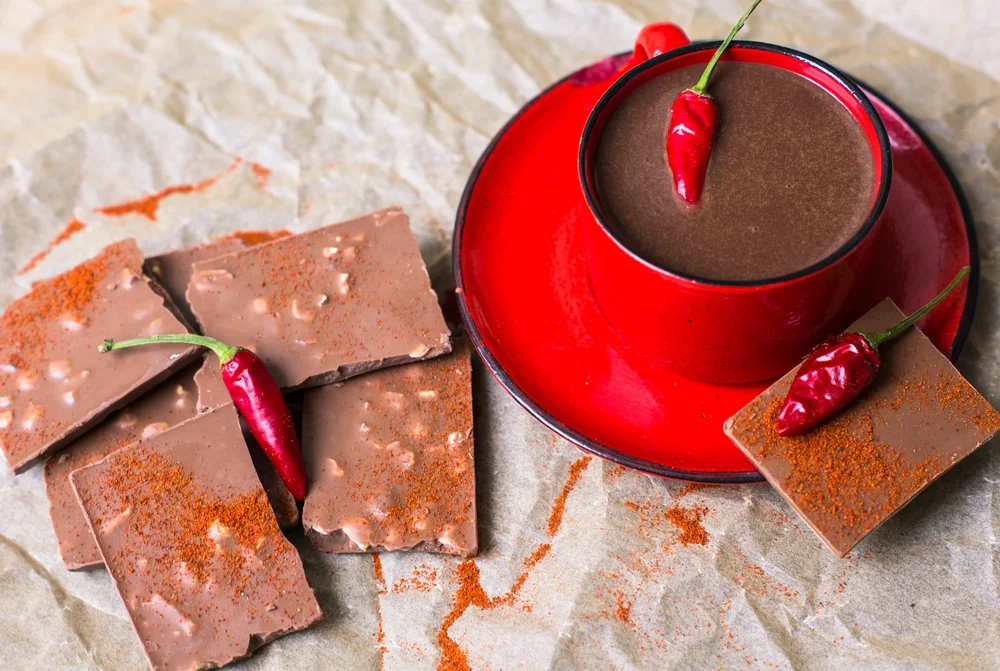
4. Balancing Complex Flavors with Simplicity
In an effort to create innovative and complex flavors, manufacturers sometimes face the challenge of overcomplicating their products. While layering multiple flavors can create depth and complexity, it’s important not to lose sight of the product’s core taste. Too many conflicting flavors can overwhelm the consumer, leading to an unbalanced or muddled taste experience.
Achieving the right balance requires restraint and a deep understanding of how each ingredient will interact with others. The key to successful flavor synergy is ensuring that every element plays a role in enhancing the overall flavor, rather than competing for attention.
5. Allergen and Sensitivity Considerations
With the increasing prevalence of food allergies and sensitivities, manufacturers must be mindful of how their flavor formulations might impact consumers. Ingredients that enhance flavor synergy in one product may not be suitable for all audiences.
For example, common allergens like dairy, nuts, and gluten can complicate flavor combinations, especially when trying to maintain the integrity of the flavor profile in allergy-friendly products.
Flavor companies must work closely with manufacturers to create formulations that meet both flavor and dietary needs. This often involves sourcing alternative ingredients that can maintain the desired flavor profile while being free from allergens or other sensitivities.
Innovative Solutions for Flavor Synergy in Modern Manufacturing
Creating perfect flavor synergy is both an art and a science, and modern food and beverage manufacturers are constantly leveraging innovation to overcome challenges and elevate taste. Advances in technology, ingredient science, and formulation techniques have made it possible to craft flavors that are more precise, consistent, and exciting than ever before.
1. Advanced Natural Flavor Formulations
Modern flavor companies specialize in natural flavor formulations that allow manufacturers to enhance taste while keeping products clean-label and consumer-friendly. These formulations use carefully selected plant-based extracts, essential oils, and natural enhancers to create balanced, layered flavors that interact harmoniously.
By understanding how each natural component contributes to flavor synergy, companies like Trilogy Flavors can help manufacturers achieve complex taste profiles without relying on artificial additives.
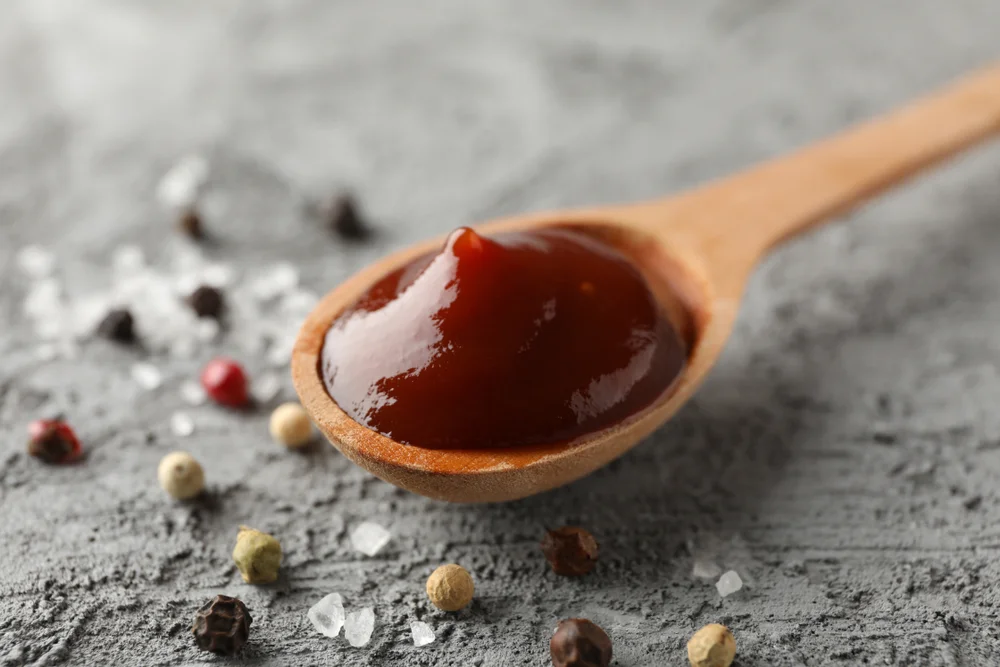
2. Liquid Seasonings and Reaction Flavors
Liquid seasonings and reaction flavors are powerful tools in modern flavor innovation. Reaction flavors are created through controlled chemical reactions between ingredients, producing unique taste profiles that cannot be achieved through simple mixing.
Liquid seasonings, on the other hand, provide a concentrated, easily incorporated flavor boost for sauces, beverages, and prepared foods. Both solutions allow for precise manipulation of flavor intensity and synergy, giving manufacturers greater flexibility in product development.
3. Technology-Driven Flavor Optimization
Cutting-edge technology plays a key role in achieving consistent flavor synergy. Advanced sensory analysis tools, flavor modeling software, and high-throughput testing allow flavor companies to predict how ingredients will interact, optimize formulations, and scale production reliably. This ensures that every batch meets exact flavor specifications, even when working with complex ingredient interactions.
4. Custom Solutions for Unique Products
Every product has its own flavor challenges and goals. Whether it’s a savory sauce, a refreshing beverage, or a snack with multiple layers of taste, customized flavor solutions are essential.
Flavor companies for food manufacturers, like Trilogy Flavors, work closely with clients to develop tailored formulations that maximize flavor synergy while meeting dietary, regulatory, and production requirements. This collaborative approach allows manufacturers to innovate confidently and bring unique products to market faster.
5. Embracing Clean Label and Consumer Trends
Consumer demand for natural, healthier products has reshaped flavor innovation. Modern solutions focus on creating authentic, complex flavors using fewer artificial ingredients while maintaining exceptional taste.
This aligns perfectly with flavor synergy principles, as the right natural ingredients interact to enhance each other, producing a rich and satisfying flavor experience that resonates with today’s health-conscious consumers.
By combining science, creativity, and technology, modern manufacturers and flavor companies are redefining what’s possible in taste. These innovations ensure that flavor synergy isn’t just a concept—it’s a tangible, achievable strategy for creating standout products in a competitive marketplace.
Additional Reading: Global Flavor Influences: What’s Driving Fusion Cuisine?
Conclusion: Why Flavor Synergy Matters
Flavor synergy transforms ordinary ingredients into extraordinary taste experiences.
By carefully combining complementary flavors, manufacturers can create products that are more balanced, complex, and memorable. From beverages and sauces to snacks and desserts, the science of flavor synergy allows food and beverage manufacturers to elevate every bite and sip, ensuring their products stand out in a competitive marketplace.
Partnering with a flavor company for food manufacturers like Trilogy Flavors provides the expertise needed to harness this power. Their scientists specialize in natural flavor formulations, enhancers, liquid seasonings, and reaction flavors that optimize ingredient interactions, helping manufacturers develop unique, innovative, and consistent products.
Whether you’re looking to enhance an existing product or create a new flavor sensation, understanding and applying flavor synergy is key. Reach out to Trilogy Flavors and talk with us to explore how expert formulation and innovative flavor solutions can elevate your products and delight consumers.
